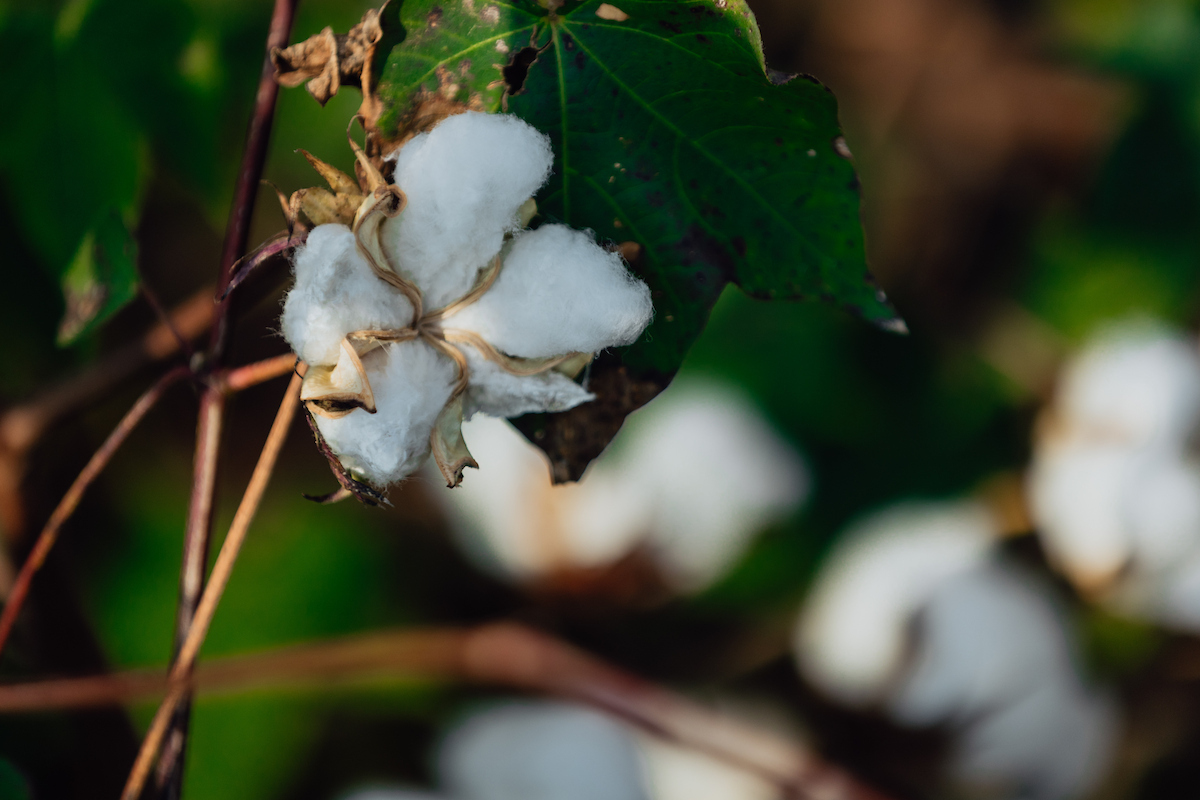Cotton
-

This publication provides a step-by-step procedures to calibrate the module handler weighting system and the on-board yield monitor on John Deere round module cotton harvesters.
Wesley Porter and Luke Fuhrer
|
-

SB 28-16
Cotton
Commercial insect and weed control in cotton. Updated annually.
Phillip Marion Roberts, Stanley Culpepper, Robert C Kemerait Jr, Allison Faye Johnson, Camp Hand, and Michael D Toews
|
-

AP 130-3-07
2025 Cotton Outlook and Market Situation
1. Cotton prices are anticipated to stay low in 2025, driven by sluggish global economic growth, declining consumer demand, and rising trade uncertainty.
2. U.S. cotton acreage and production are likely to remain at current low levels in 2025 because of relatively weaker price expectations compared to competing crops.
3. Cotton production in 2025 is expected to face limited opportunities for profitability recovery, constrained by high input costs and low prices.Yangxuan Liu
|
-

AP 124-4
2024 Georgia Cotton Production Guide
The 2024 edition of the cotton production guide provides an in-depth look at cotton production in Georgia and the Southeastern U.S. Issues discussed include economic outlook, fertility, weed management, insect management, disease and nematode management, irrigation decisions, precision ag technology, and general agronomics of the cotton crop (varieties, PGR applications, defoliation, etc.).
Camp Hand
|
-

In 2010, the UGA cotton agronomists implemented this variety testing program. Our industry partners were asked to provide their most well-suited varieties for Georgia. Historically, the varieties evaluated in this trial have accounted for nearly 75% of the planted acreage in Georgia in the same year. These varieties were planted in replicated trials in growers’ fields throughout cotton-producing regions of Georgia, through coordination with the county Extension agents. The trials were managed and replicated by the grower with the assistance of the coordinating county agent to achieve realistic and statistically sound results.
R. Anthony Black, Wade B. Parker, Eric Elsner, Scott Rogers, and Camp Hand
|
-

Cotton defoliation is a complex production decision with many chemical options to consider. Harvest aids are utilized to prepare the crop for machine harvest, and timely defoliation and harvest of cotton can reduce weathering losses (yield and quality) and decrease trash in the lint. A basic knowledge of crop development and maturity as well as an understanding of the physiological effects of harvest aids on cotton plants is necessary in making decisions concerning defoliation.
John L Snider and Camp Hand
|
-

AP 130-2-04
2024 Cotton Outlook
1. U.S. cotton acreage and production are likely to decline in 2024 because of lower relative price expectations with competing crops.
2. The cotton production profit margin is likely to be lower in 2024 with high input costs and low cotton prices.Ben Campbell and Yangxuan Liu
|
-

Whiteflies are common and recurrent insect pests of cotton in Georgia. The severity of whitefly damage varies from year to year based on the size of the pest population. The most abundant species of whitefly found infesting cotton in Georgia is Bemisia tabaci, commonly known as the silverleaf whitefly (SLWF) or sweet potato whitefly. Another species, bandedwinged whitefly (Trialeurodes abutiloneus), may also be present in Georgia cotton. This publication highlights whitefly biology, damage, sampling procedures, control methods, and tips for managing risk in cotton.
Phillip Marion Roberts, Apurba Barman, and Michael D Toews
|
-

The success of the Southeast Boll Weevil Eradication Program has played a major role in the recent revival of Georgia’s cotton industry. Along with these economic benefits, the remarkable success of the eradication program
has led to a significant decrease in insecticide use in Georgia cotton, and to substantial environmental benefits to growers and residents of the state.Phillip Marion Roberts
|